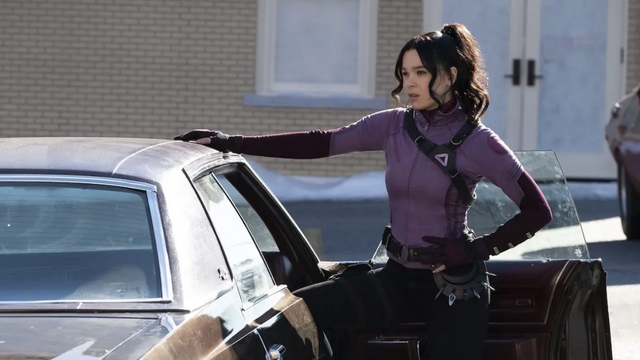Hawkeye has recently proven to be one of Marvel Studios’ most popular Disney+ programmes to date, eschewing world-ending dangers and game-changing reveals in favour of a street-level superhero story that makes full use of its holiday setting. Throughout its six-episode run, the archer-centric solo adventure was hailed for its characters, relationships, and outstanding storytelling.
Despite this, Hawkeye encountered a snag in its concluding moments, as many fans were left unsatisfied with its post-credits scene. Clint attended an extended version of the Captain America musical in Hawkeye’s post-credits sequence, which was exploited for comedy purposes.
Despite widespread disapproval, the sequence broke a major MCU record by a significant margin and was also notably unique in other respects.
EXPLAINING HAWKEYE’S POST-CREDITS SCENE
Save the City” was Hawkeye’s reference to the larger MCU, a chance to contrast Clint’s peaceful demeanour and family life with the glamorous existence of the Avengers. The ideal hero is Captain America, and Hawkeye is also present. And so is Nat, prompting Clint to consider his grief.
So why does “Save the City” revisit this subject in its concluding moments? An encore is a musical theatre staple that dates back centuries. After functioning as nothing more than glorified set dressing, the song is reintroduced to assume centre stage.
Not only does this give Scott Wittman and Marc Shaiman’s hilariously tongue-in-cheek lyrics (“We’ll blame you then, but you’re good for now”) the attention they deserve, but it also gives credit to the song’s real stars, narrators Adam Pascal (Roger from Rent) and Ty Taylor (the voice of Lester from Vinyl).
View this post on Instagram
MUST READ:
- Venom 2 Post-credits Scene: How Many Post-credits Scenes Does Venom 2 Contain?
- “Doctor Strange: Multiverse of Madness”: How Many Post-Credit Scenes? Are sequels planned?
This is perhaps the first MCU post-credits scene to focus on the past rather than the future. It may seem odd, yet it is precisely what Hawkeye requires.
Kate’s experience during the Battle of New York, Clint’s past as a Ronin, and Natasha’s sacrifice are all reflected throughout the series. The only logical option is a flashback to a fan-favourite episode moment.
Hawkeye may establish a precedent within the MCU for streaming content. Without post-credit teasers, these self-contained television programmes can stand on their own, allowing them to succeed (or fail) based on their own merits.
Maybe WandaVision is required viewing for Doctor Strange in the Multiverse of Madness and The Falcon and the Winter Soldier provides essential context for Captain America 4, but Hawkeye feels more like a fun bonus prelude than a requirement for the next step in Kate and Clint’s (and Echo and Yelena’s) journey.
Hawkeye never took himself seriously, if there is one thing that can be said about him. The series covered its themes of loss, sadness, and pain with humour, as evidenced by the pervasive holiday spirit, the banter between Yelena and Kate, and the entire premise of the Tracksuit Mafia. It should conclude with a self-aware victory lap of its most hilarious moment.
READ MORE:
- Is There a Post-credits Scene in ”no Time to Die”? Confirmation Available Here
- Explanation of the Black Widow Post-credits Scene How It Sets Up the MCU’s New Alliance
This is not the end of dramatic post-credits surprises (Spider-Man: No Way Home demonstrates that), but it does solve a significant problem with them.
Hawkeye throws a wrench into Marvel’s engine since shocking occurrences have grown so expected as to be practically required. Perhaps post-credits scenes can serve as supplementary material. It is not revolutionary, but it is entertaining.
